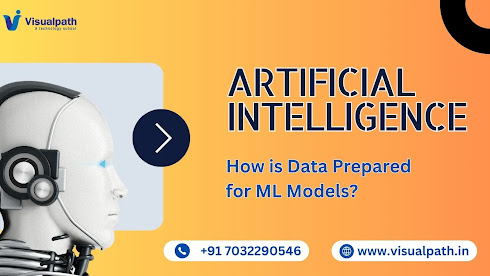How is Data Prepared for ML Models?

How is Data Prepared for ML Models? Preparing data is one of the most critical steps in building a successful machine learning model. Without clean, well-structured data, even the most advanced algorithms may fail to produce accurate results. Understanding how to collect, clean, and transform data is essential for aspiring AI professionals and anyone enrolled in an Artificial Intelligence Online Course . Let’s explore the key stages involved in preparing data for machine learning, broken down into structured, actionable steps. How is Data Prepared for ML Models? 1. Data Collection The first step is to gather relevant data from various sources such as databases, APIs, spreadsheets, IoT devices, or web scraping . The quality and volume of this data directly impact the model’s performance. It's important to ensure that the data collected is comprehensive, current, and reflective of the problem being addressed. 2. Data Integration Once data is collected from multiple sour...

